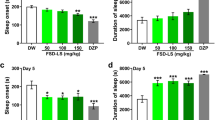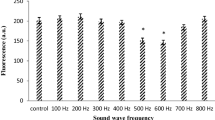Abstract—The suprachiasmatic nucleus (SCN) regulates the functioning of the body in accordance with circadian rhythms thanks to the pacemaker neurons present in it and afferents modulating these neurons. One of the afferents is represented by nerve fibers containing only the first enzyme for the synthesis of catecholamines, tyrosine hydroxylase (TH). In ontogeny, the concentration of these fibers (amount per unit volume of tissue) reaches a maximum on the 10th postnatal day (P10), and then gradually decreases. The aim of this work was to verify our assumption that, in TH-containing fibers in SCN of rats, L-DOPA is synthesized from L-tyrosine as the final secretory product, and the efficiency of this synthesis is higher in the early postnatal period than in adults. The synthesis of L-DOPA was evaluated by an increase in the total content of L-DOPA in SCN and in the incubation medium after a two-hour incubation of SCN in a medium with or without L‑tyrosine. We found that the addition of L-tyrosine to the incubation medium led to a multifold increase in the total L-DOPA content in SCN and in the medium, which is evidence of the synthesis of L-DOPA as a final product in TH-containing fibers. A comparative analysis of the synthesis of L-DOPA in SCN at P10 and P60 showed that the synthesis rate (a ratio between the total content of L-DOPA in SCN and in the incubation medium to the incubation time) at P60 exceeds the synthesis rate at P10, while the efficiency of L‑DOPA synthesis (a ratio between the rate of L-DOPA synthesis and the total protein content in SCN) is higher at P10. Thus, we obtained evidence of L-DOPA synthesis in TH-containing SCN nerve fibers, and the efficiency of this synthesis in rats in the early postnatal period is higher than in adult animals.




Similar content being viewed by others
REFERENCES
Moore, R.Y., Ciba Found. Sym, vol. 183, pp. 88–99.
Kartasoreos, I.N. and Silver, R., Endocrinology, 2007, vol. 148, pp. 5640–5647.
Medanic, M. and Gillette, M.U., J. Physiol., 1992, vol. 450, pp. 629–642.
Medanic, M. and Gillette, M.U., Brain Res., 1993, vol. 620, pp. 281–286.
Mirochnik, V.V., Makarenko, I.G., and Ugryumov, M.V., Ontogenez, 2002, vol. 33, pp. 182–186.
Beltramo, M., Calas, M., Chernigovskaya, E., Borisova, N., Polenova, O., Tillet, Y., Thibault, J., and Ugrumov, M., Neuroscience, 1994, vol. 63, pp. 603–610.
Ugrumov, M.V., Adv. Pharmacol., 2013, vol. 68, pp. 37–91.
Ugrumov, M., Taxi, J., Pronina, T., Kurina, A., Sorokin, A., Sapronova, A., and Calas, A., Neuroscience, 2014, vol. 277, pp. 45–54.
Kozina, E.A., Kim, A.R., Kurina, A.Y., and Ugrumov, M.V., Neurobiol. D., 2017, vol. 98, pp. 108–121.
Misu, Y., Kitahama, K., and Goshima, Y., Pharmacol. Therapeut., 2003, vol. 97, pp. 117–137.
Fukuda, N., Naito, S., Masukawa, D., Kaneda, M., Miyamoto, H., Abe, T., Yamashita, Y., Endo, I., Nakamura, F., and Goshima, Y., Brain Res., 2015, vol. 1602, pp. 62–74.
Ugrumov, M.V., J. Chem. Neuroanat., 2009, vol. 38, pp. 241–256.
Ashwell, K.W.S. and Paxinos, G., Atlas of the Developing Rat Nervous System. Compact3rd Ed., London: Academic Press, 2008.
Paxinos, G. and Watson, C., The Rat Brain in Stereotaxic Coordinates. Compact6th Ed., London: Academic Press, 2009.
Reenila, I. and Mannisto, P.T., Medical Hypotheses, 2001, vol. 57, pp. 628–632.
Funding
The study was supported by a grant from the Russian Science Foundation, project no. 17-14-01422.
Author information
Authors and Affiliations
Corresponding author
Ethics declarations
Conflict of interest. The authors declare no conflicts of interest.
Ethical approval. All manipulations with animals were performed in accordance with national and international requirements and guidelines approved by the Committee for the Protection of Animals of the Koltsov Institute of Developmental Biology of the Russian Academy of Sciences.
Rights and permissions
About this article
Cite this article
Pronina, T.S., Nikishina, Y.O., Dil’mukhametova, L.K. et al. Synthesis of L-Dihydroxyphenylalanine by Monoenzymatic Tyrosine Hydroxylase-Containing Nerve Fibers in the Suprachiasmatic Nucleus in Rats during Ontogeny. Neurochem. J. 14, 167–172 (2020). https://doi.org/10.1134/S1819712420020087
Received:
Revised:
Accepted:
Published:
Issue Date:
DOI: https://doi.org/10.1134/S1819712420020087




